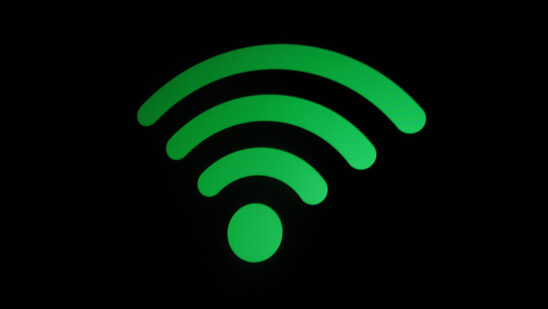
Wi-Fi has been implemented in an increasing number of products since its discovery in 1985. These products, such as mobile devices, are propagating at an exponential rate. A Wi-Fi-enabled device connects to the internet via a wireless network coverage of one or more access points, or hotspots. In the home, broadband and phone packages now come with wireless routers that distribute the wireless network.
Coverage extended for many miles has enabled the implementation of outdoor public Wi-Fi technology, although sometimes at a cost. Current Wi-Fi technology operates on the radio waveband of the electromagnetic spectrum, but this is reaching a saturation point. Technological products such as televisions and mobile devices are being developed to become increasingly more reliant on the internet.
The pressure applied to the radio waveband due to the rapid growth in sales of these products is coupled with the release of household appliances that are also Wi-Fi enabled. Refrigerators and ovens are the latest developments and these will only be followed by other appliances.
Is the future looking bleak? Fear not, as a research team may have found a way out of this predicament.
Japanese researchers have managed to use the terahertz band of the electromagnetic spectrum for wireless data transmission. This is a band that comes before both the radio and microwave bands and is a previously unchartered part of the spectrum for this purpose.
The team has recorded a data transmission rate 20 times higher than that of the best standard of Wi-Fi. And since this band is currently unregulated by telecommunications companies, it has the potential to offer a great deal of bandwidth, relieving the pressure on the radio waveband.
Although named the Terahertz band, the frequencies associated with it range from 300GHz to about 3THz and are more commonly known in the medical industry as a safer alternative to X-ray imaging.
A solution to the burden on the radio waveband has been sought for some time now with so-called “T rays” having been insight. However, as with many other technologies, the size and cost associated with these have inhibited their implementation. Mobile devices are reducing in size with each new launch, and it is therefore essential that any replacement technology does not impede these.
However, electronics company ROHM developed a component that is only 1mm square and revealed a 1.5 GB/s transfer rate at a frequency of 300GHz. The Japanese team subsequently confirmed 3GB/s at 542GHz.
The breakthrough by the research team does lead to the question of whether entire countries need to be in effect “re-wired” to support faster broadband speeds.
Since the current drawback of the technology is that it only has a range of 10m, it will only be of use in the home or a small office which will, therefore, nullify the need for new cabling leading to homes, potentially saving huge amounts of money. In the future, it will not be the broadband speed but the transmission from the wireless router that will determine internet speed.
Title Image Courtesy: Flickr/Christiaan Colen